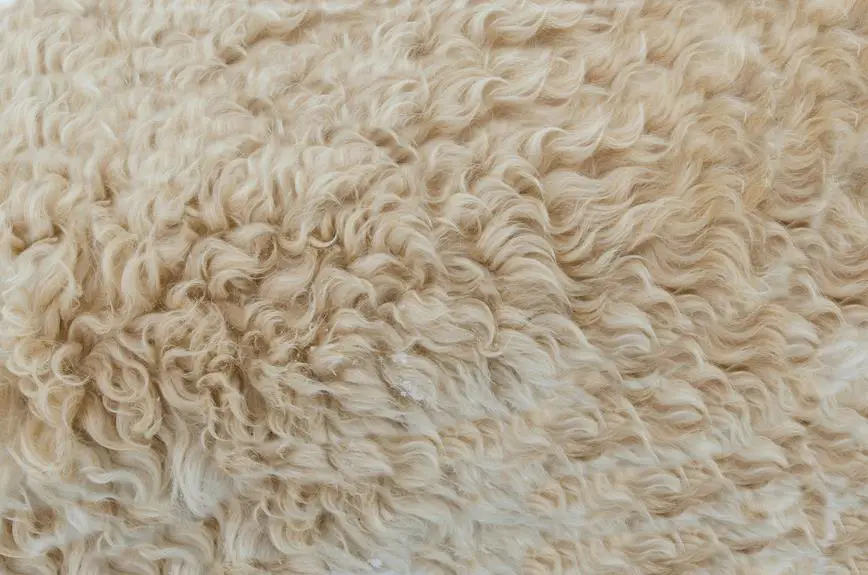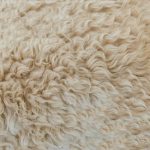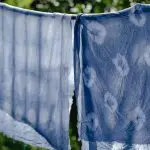When you're faced with the choice between voile and silk, you might find yourself considering various factors that align with your lifestyle and preferences. Voile's lightweight, breathable nature makes it an attractive option for casual settings, while silk offers an undeniable touch of luxury for more formal occasions. However, the differences extend beyond just feel and occasion; you'll want to think about durability, care, and cost. So, how do you decide which fabric truly meets your needs? The answer might not be as straightforward as you think.
Table of Contents
Overview of Voile
Voile is a lightweight, sheer fabric that's often made from cotton or linen, making it a popular choice for curtains and summer clothing. This airy textile lets in light while providing a degree of privacy, perfect for brightening up your living space without sacrificing comfort. You'll appreciate how effortlessly voile drapes, creating soft, flowing lines that enhance the beauty of any room or outfit.
When it comes to care, voile is relatively easy to maintain. It usually requires gentle washing and can be ironed on a low setting to remove wrinkles. This makes it a practical option for busy households or those who love to wear fresh, crisp clothing.
You might also find that voile comes in various colors and patterns, allowing you to express your style easily. Whether you're looking for delicate florals for a summer dress or solid hues for a modern look, the options are plentiful.
Characteristics of Silk
When you touch silk, you'll immediately notice its luxurious texture and feel that sets it apart from other fabrics.
This material not only feels incredible against your skin, but it also offers natural temperature regulation, keeping you comfortable in various climates.
Let's explore these standout characteristics and see why silk is a timeless favorite.
Luxurious Texture and Feel
Silk's sumptuous texture and smooth feel create an unparalleled sense of luxury against the skin. When you wear silk, you immediately notice how it drapes effortlessly, enhancing your silhouette while providing comfort. The fabric's natural sheen adds an elegant touch, making you feel sophisticated and refined.
Unlike other materials, silk has a unique ability to glide over your skin, reducing friction and irritation. This quality makes it an ideal choice for garments that you'll wear for extended periods, as it allows for free movement without discomfort. You'll also appreciate how silk feels cool to the touch, which can elevate your experience on warm days or during special occasions.
In addition to its feel, silk's lightweight nature means it won't weigh you down, allowing you to enjoy the elegance without sacrificing comfort. Whether you're dressing up for a night out or lounging at home, silk elevates your wardrobe, offering a tactile experience that's hard to match.
Natural Temperature Regulation
This luxurious fabric excels at natural temperature regulation, keeping you comfortable in both warm and cool conditions. Silk's unique properties allow it to wick moisture away from your skin, ensuring you stay cool during hot days. Conversely, it traps heat when temperatures drop, providing warmth in cooler environments. This makes silk an ideal choice for year-round wear.
Here's a quick comparison of silk's temperature-regulating qualities:
| Feature | Silk |
|---|---|
| Moisture Wicking | Excellent |
| Breathability | High |
| Insulation | Moderate |
| Comfort in Heat | Superior |
| Comfort in Cold | Good |
With silk, you won't have to worry about feeling too hot or too cold. Its natural fibers allow for airflow, making it a breathable option that adapts to your body's needs. So, whether you're lounging at home or dressing up for an event, silk's temperature-regulating attributes ensure you'll feel great throughout the day. Choosing silk means embracing a fabric that not only looks stunning but also works tirelessly to keep you comfortable.
Comparing Texture and Feel
Feeling the difference between voile and silk reveals a world of texture that can transform your fabric experience.
When you touch voile, you'll notice its lightweight, airy feel. It's soft yet slightly crisp, giving it a delicate quality that works beautifully in layers, whether you're making curtains or a summer dress. The fabric has a subtle sheen, but it doesn't overpower; instead, it offers a gentle elegance.
On the other hand, silk provides a luxurious, smooth texture that glides over your skin. You'll feel its richness immediately, as it drapes gracefully and has a natural luster that catches the light. Silk's softness is unparalleled, making it a popular choice for high-end garments and intimate apparel. This sumptuous fabric feels cool to the touch, which can be especially appealing in warmer climates.
While both fabrics offer unique textures, your choice will depend on the overall feel you're aiming for. If you prefer a light and airy sensation, voile is your best bet. For a touch of luxury and smoothness, silk will be your go-to. Each fabric offers a distinct tactile experience that can elevate your wardrobe.
Durability and Care Requirements
When it comes to durability and care, voile generally requires less maintenance than silk, making it a practical choice for everyday wear. Voile is lightweight and holds up well to regular use, while silk, despite its luxurious feel, is more delicate and often needs extra attention to keep it looking its best.
Here's a quick comparison to help you decide:
| Feature | Voile | Silk |
|---|---|---|
| Durability | Highly durable, withstands frequent washing | Less durable, prone to snagging and tearing |
| Care | Machine washable, low heat drying | Hand wash or dry clean only, no wringing |
| Ironing | Low heat, quick to press | Medium heat, requires careful handling |
If you're looking for something that can handle daily wear and tear with minimal fuss, voile is the way to go. On the other hand, if you're drawn to silk's elegance, be prepared for more careful handling and maintenance. Your choice ultimately depends on how you prioritize durability versus luxury in your wardrobe.
Cost and Availability
When you're considering voile and silk, cost and availability play a big role in your decision.
You'll find that voile is generally more budget-friendly, while silk tends to come with a higher price tag.
Additionally, it's important to explore how easily you can find these fabrics in your local market or online.
Price Comparison
Voile generally costs less than silk, making it a more budget-friendly choice for various projects and garments. If you're working on a tight budget or just want to save some money, voile offers excellent value without sacrificing style. Prices for voile typically range from $5 to $15 per yard, depending on the quality and design.
On the other hand, silk can be quite pricey. You might find silk fabrics priced anywhere from $15 to upwards of $50 per yard, especially for higher-quality options. This significant price difference can impact your decision, particularly if you're planning to make multiple items or larger projects.
When you choose voile, you'll likely have more room in your budget for additional materials or embellishments. If you're creating home decor items, clothing, or accessories, this low-cost fabric allows for experimentation without breaking the bank.
While silk exudes luxury and elegance, its cost can limit your options. Ultimately, consider your budget and project needs carefully. If affordability is your priority, voile is the clear winner in the price comparison between these two fabrics.
Market Accessibility
Finding voile is generally easier and more affordable than sourcing silk, making it a popular choice for many DIY enthusiasts and designers.
You'll notice that voile is widely available in fabric stores, online retailers, and even craft shops. Its lower price point means you can buy larger quantities without breaking the bank, which is perfect for those big projects.
On the other hand, silk can be a bit trickier to find. You may need to visit specialty fabric stores or high-end boutiques, which often carry a limited selection.
Plus, silk's higher cost can restrict your options and make it less accessible for budget-conscious shoppers. When you do find silk, it's usually in smaller quantities or specific patterns, which mightn't meet your needs for larger projects.
If you're looking for versatility and ease of access, voile is the way to go. With its abundance in the market and reasonable price, you can experiment with different patterns and designs without the worry of overspending.
Best Uses for Each Fabric
Each fabric serves distinct purposes, with voile's lightweight charm ideal for airy curtains and delicate summer dresses, while silk's luxurious sheen makes it perfect for elegant evening wear and sophisticated accessories.
When you're choosing between these fabrics, consider how you plan to use them.
Voile is fantastic for projects that benefit from its breathability and flow. Think about using it for:
- Light summer blouses that need a breezy feel
- Soft, flowing skirts perfect for warm weather
- Charming window treatments that let in natural light
- Romantic table linens for outdoor dining
On the other hand, silk elevates any look with its opulence. It's an excellent choice for:
- Stunning dresses for formal events or weddings
- Luxurious scarves that add a touch of elegance
- Classy blouses that transition easily from day to night
- Exquisite lingerie that feels indulgent against the skin
Frequently Asked Questions
Is Voile Suitable for Outdoor Use in Sunny Weather?
Yes, voile can be suitable for outdoor use in sunny weather. Its lightweight and breathable nature helps keep you cool. Just ensure it's properly secured, as strong winds might easily lift or damage it.
Can Silk Be Machine-Washed Without Damaging the Fabric?
You can't machine-wash silk without risking damage. It's best to hand-wash it gently in cold water or use a delicate cycle with a mesh bag. Always check care labels for specific instructions before cleaning.
What Are Common Dyeing Techniques for Voile?
Common dyeing techniques for voile include reactive dyeing, which bonds with fibers, and direct dyeing, where you apply color directly. You can also try tie-dyeing for unique patterns, or batik for intricate designs.
Are There Eco-Friendly Options for Both Voile and Silk?
Yes, there are eco-friendly options for both voile and silk. You can look for organic cotton voile or silk produced through sustainable practices. These choices minimize environmental impact while offering beautiful, high-quality fabrics for your projects.
How Do Voile and Silk Perform in Humid Conditions?
In humid conditions, you'll find voile's lightweight, breathable fabric helps keep you cool, while silk may cling to your skin, making you feel less comfortable. Choose based on how you prefer to handle humidity.
- How Does Ring Spun Cotton Affect Garment Fit and Shape Retention? - August 13, 2024
- What Are the Challenges in Producing Ring Spun Cotton? - August 13, 2024
- Is Ring Spun Cotton Suitable for Plus-Size Clothing? - August 13, 2024







